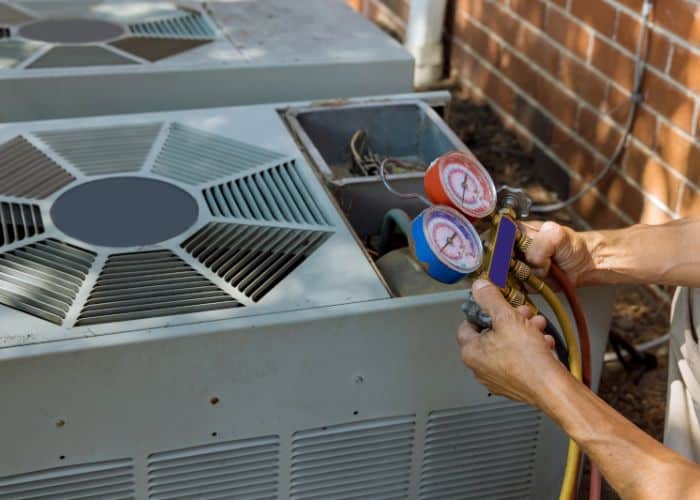Best Cooling Solutions for Older Homes
Best Cooling Solutions for Older Homes in Sacramento, CA

Older homes have a charm and character that newer properties often lack, but they also come with unique challenges—especially when it comes to staying cool during the hot months. Whether it’s plaster walls, poor insulation, or the absence of existing ductwork, traditional air conditioning solutions don’t always work efficiently in these structures. Fortunately, several effective cooling solutions can help you beat the heat without compromising the integrity or aesthetics of your beloved home.
1. Ductless Mini-Split Systems
One of the most popular modern cooling solutions for older homes is the ductless mini-split system. These systems consist of an outdoor condenser unit and one or more indoor air handlers. Because they don’t require ductwork, they’re ideal for homes that were built before central air conditioning became common.
Benefits:
Energy efficient
Zoned cooling—different rooms can have different temperatures
Easy installation with minimal structural modification
Quiet operation
Mini-splits also offer heating capabilities, making them a year-round comfort solution. While the upfront cost is higher than window units, the long-term energy savings often make them a worthwhile investment.
2. High-Velocity HVAC Systems
If you want central air but don’t want to tear down walls to install bulky ductwork, a high-velocity HVAC system may be your best bet. These systems use small, flexible ducts that can snake through existing wall cavities, ceilings, or floors with minimal disruption.
Benefits:
Preserves architectural integrity
Provides even, fast cooling
More efficient air distribution compared to traditional systems
Though installation can be complex, many homeowners find this option ideal for preserving the aesthetic of their vintage home while upgrading comfort.
3. Window and Portable Air Conditioners
For a more budget-friendly and temporary solution, window units and portable air conditioners can be effective. These devices don’t require any permanent changes to your home, making them ideal for renters or those not ready for a full HVAC overhaul.
Pros:
Lower upfront cost
Easy installation
Ideal for cooling individual rooms
Cons:
Can be noisy
May obstruct windows or require a nearby outlet
Less energy-efficient over time compared to newer technologies
While not ideal for whole-house cooling, these units can be strategically placed in frequently used rooms to maximize comfort.
4. Attic and Whole-House Fans
Before air conditioning, homeowners relied on attic fans and whole-house fans to move hot air out and pull cooler air in during the evening and early morning hours.
Attic Fans work by venting hot air out of your attic, reducing the overall temperature in your home. Meanwhile, whole-house fans draw cool air in through open windows and push hot air out through the attic.
Benefits:
Lower energy use
Can significantly reduce indoor temperature
Environmentally friendly cooling solution
These fans are best used in conjunction with other cooling methods and are especially effective in dry, temperate climates.
5. Upgraded Insulation and Sealing
Older homes often suffer from drafts, poor insulation, and leaky windows, which can make cooling efforts less effective. Investing in better insulation, weather stripping, and energy-efficient windows can dramatically improve your home’s ability to retain cool air.
Tips:
Seal cracks around doors and windows
Insulate attic spaces and exterior walls
Use thermal curtains to block out heat
While this doesn’t generate cold air, improved insulation helps your existing cooling system work more efficiently and keeps your home more comfortable.
6. Ceiling and Circulating Fans
Ceiling fans and portable oscillating fans don’t cool the air per se, but they improve comfort by enhancing air circulation. They can also be used in tandem with other cooling systems to reduce the workload on air conditioners.
Tips for Maximum Effectiveness:
Use fans counterclockwise in the summer to push air downward
Place circulating fans near windows to pull in cooler outside air during mornings and evenings
Turn off fans when not in use to save energy
These are low-cost solutions that add immediate relief and can enhance other cooling strategies.
7. Smart Thermostats and Zoning
Using a smart thermostat or creating cooling zones in your home can improve efficiency, especially if you’ve installed a mini-split or high-velocity system. These devices learn your habits and automatically adjust temperatures to optimize comfort and energy use.
Benefits:
Lower energy bills
Remote control via smartphone
Can integrate with other smart home devices
In older homes, zoning can be particularly helpful by directing cooling power where it’s needed most—like upper floors or west-facing rooms.
Final Thoughts
Cooling an older home may take some creativity and a bit of investment, but it’s completely achievable. From ductless systems and high-velocity HVAC to ceiling fans and upgraded insulation, you can find a solution that respects the structure of your home while keeping it comfortable during even the hottest months.
Before deciding on a solution, consider having a professional HVAC technician assess your home’s structure and cooling needs. The right cooling setup will not only improve your comfort but can also add to your home’s energy efficiency and long-term value.
